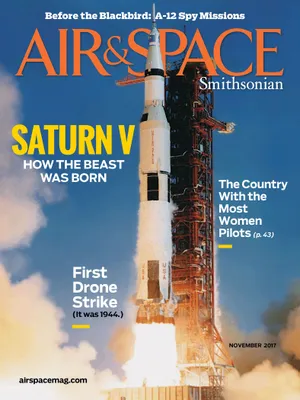Brian Monroe, NASA Animator
The space agency needs filmmakers, too.
:focal(744x235:745x236)/https://tf-cmsv2-smithsonianmag-media.s3.amazonaws.com/filer/45/20/45200f8f-bfc5-45a6-b866-4ef377150bfb/01a_on2017_briannewimg_4021_live.jpg)
After graduating from the film and animation program at the Rochester Institute of Technology in New York, Monroe worked on animations for science and educational programming.
The job: Convey scientific concepts through short visuals. “A lot of our [products] are just three or four minutes,” says Monroe. “And our component, the animation, is sometimes just 10 to 15 seconds long.”
The path: “Most people go into animation thinking they’ll do character animations for a large company like Pixar and work in the feature film industry,” says Monroe. “That’s how I thought my career would go.” Instead, in 2009 he started at Grasshorse, an independent studio in the Midwest, creating animation for commercials and documentary films. A year later, Monroe went to Pixeldust Studios, developing content for the TV series NOVA and the Smithsonian Institution. “One week we’d do animation on the properties of venom, and the next we’d work on the use of the sextant for navigating by sea,” he says. He applied for a year-long fellowship at Goddard, and in 2014 was offered a permanent position at the center through the Universities Space Research Association.
Sample project: When a scientist wanted a video on the electric wind of Venus, Monroe had an idea. “We have limited imagery on the surface of Venus,” says Monroe, “so I did a stylized animation where the landscape of Venus would be painted upon the blank pages of a book.” He created storyboards of the animation sequence, constantly checking to make sure the scientific concepts were correct. “I don’t have a strong scientific background,” says Monroe, “and that almost becomes an advantage for me: In order for the audience to understand the concept, I have to understand it as well and find a good way to convey the information.”
Perks of the job: “At Goddard, we have the primary mirrors for the James Webb telescope,” says Monroe. “We can see the texture and materials, and get a sense of just how large it is. This is especially important when we’re doing a spacecraft animation.”
Advice to those hoping to enter the field: “Don’t just focus on the software and the tools; you also have to be able to tell stories in a short amount of time.”
